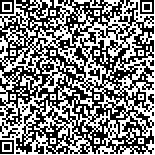下载中心
优秀审稿专家
优秀论文
相关链接
摘要

不透水面信息是监测城市扩张及区域生态环境变化研究的重要指标,基于遥感技术对地表不透水面信息进行快速提取具有重要意义。传统大范围不透水面覆盖率估算模型主要基于单一遥感信息与不透水面比例之间的相关性,通过单因子回归模型实现不透水面覆盖率的估算。受限于单一遥感信息的信息量及普适性等影响,这类方法在大尺度不透水面提取中具有较大局限性,估算结果的区域适应性存在较大差异。针对该问题,本文提出基于多特征遥感信息进行不透水面估算的方法,以弥补单一特征在大范围不透水面提取中的不确定性。该方法首先以多时相MOD13Q1、MOD09A1产品、夜间灯光数据(NPP-VIIRS)和Landsat 8 OLI为遥感数据源,从不同角度构建突出不透水面信息的多个指数特征;在此基础上利用多元回归模型建立多因子不透水面覆盖率估算模型,进而实现大尺度不透水面覆盖率的遥感估算。本研究选择分布于全国范围内13个典型城市作为主要研究区对提出的模型进行了验证,结果表明:该方法能够适应不同区域不透水面覆盖率的估算,在复杂城市区域表现出较传统方法更好的效果,明显改善了城市内部不透水面覆盖率的估算精度。
Impervious surface information is an important indicator for monitoring urban expansion and regional ecological environment change. Extracting impervious surface information based on remote sensing technology is of great importance. The traditional large-scale impervious surface percentage estimation model is estimated by a single-factor regression model based on the correlation between the specific remote sensing information and the impervious surface ratio. Given the influence of the amount of information and universality of specific remote sensing information, these methods have considerable limitations in large-scale impervious surface extraction, and their regional adaptability of estimation results is slightly different. To address this problem, this study proposes a method for estimating the impervious surface based on multiple features remote sensing information to compensate for the uncertainty of single feature in large-scale impervious surface extraction. First, MOD13Q1, MOD09A1 products, nighttime lighting data (NPP-VIIRS), and Landsat 8 OLI are used as remote sensing data sources to construct multiple index features of impervious surface information from different angles. On this basis, a multi-regression model is used to establish a multifactor impervious surface percentage estimation model to realize remote sensing estimation of large-scale impervious surface percentage. This study selects 13 typical cities across the country as the main research area to verify the proposed model. Results show that the method can adapt to the estimation of impervious surface percentage in different regions and that it is better than traditional methods in complex urban areas. The effect has significantly improved the accuracy of the estimation of impervious surface percentage within the city.

